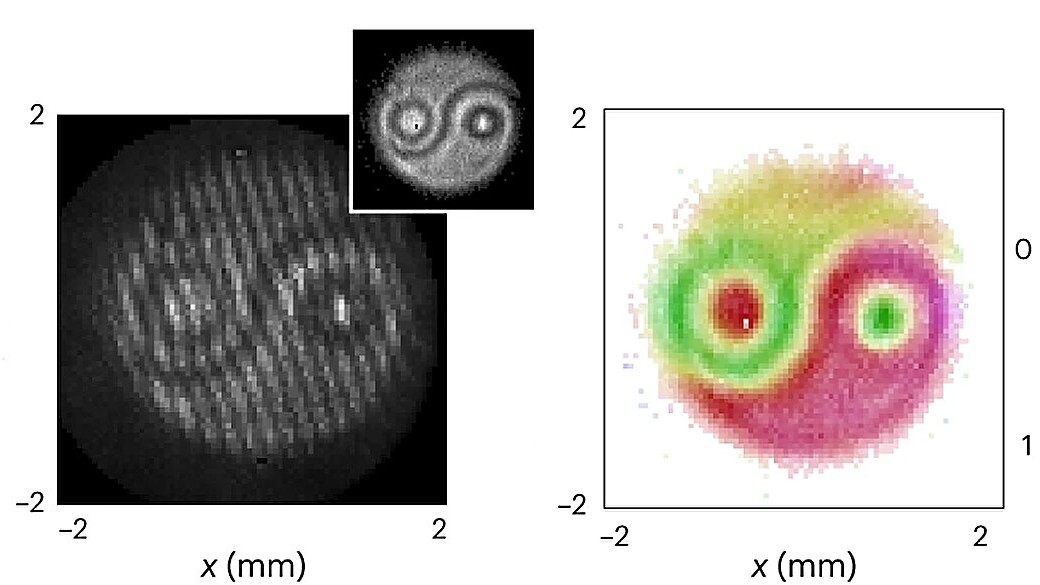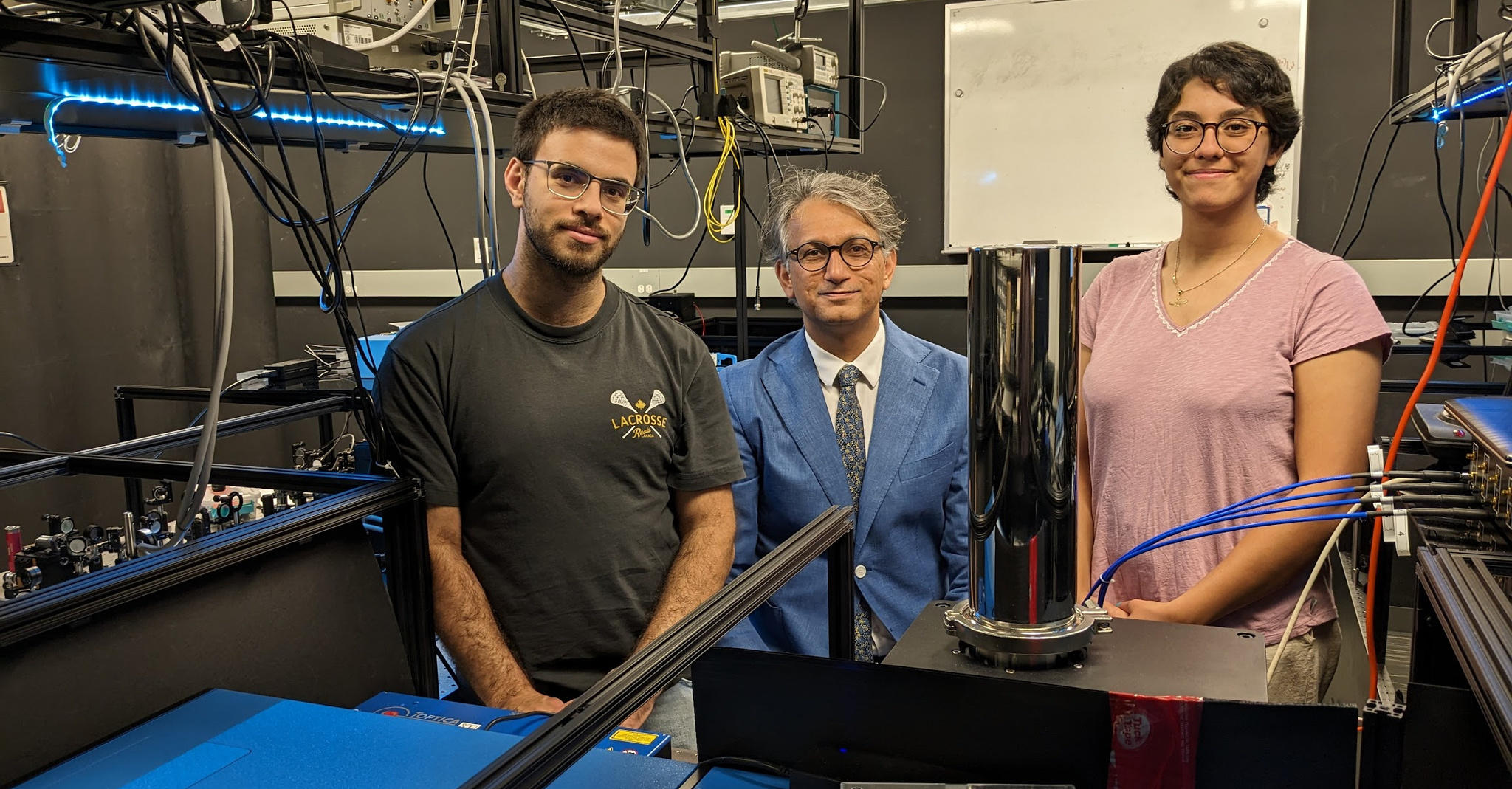Quantum 'yin-yang' shows two photons being entangled in real-time
The stunning experiment, which reconstructs the properties of entangled photons from a 2D interference pattern, could be used to design faster quantum computers.

Scientists have used a first-of-its-kind technique to visualize two entangled light particles in real time — making them appear as a stunning quantum "yin-yang" symbol.
The new method, called biphoton digital holography, uses an ultra high-precision camera and could be used to massively speed up future quantum measurements.
The researchers published their findings Aug. 14 in the journal Nature Photonics.
Related: Bizarre particle that can remember its own past created inside quantum computer
Quantum entanglement — the weird connection between two far-apart particles that Albert Einstein objected to as "spooky action at a distance" — enables two light particles, or photons, to become inextricably bound to each other, so that a change to one causes a change in the other, no matter how far apart they are.
To make accurate predictions about a quantum object, physicists need to find its wavefunction: a description of its state existing in a superposition of all the possible physical values a photon can take. Entanglement makes finding the wavefunction of two connected particles a challenge, as any measurement of one also causes an instantaneous change in the other.

Physicists usually approach this hurdle through a method known as quantum tomography. By taking a complex quantum state and applying a projection to it, they measure some property belonging to that state, such as its polarization or momentum, in isolation from others.
Sign up for the Live Science daily newsletter now
Get the world’s most fascinating discoveries delivered straight to your inbox.
By repeating these measurements on multiple copies of the quantum state, physicists can build up a sense of the original from lower-dimensional slices — like reconstructing the shape of a 3D object from the 2D shadows it casts on surrounding walls.
This process gives all the right information, but it also requires a lot of measurements and spits out plentiful "disallowed" states that don't follow the laws of physics to boot. This leaves scientists with the onerous task of painstakingly weeding out nonsensical, unphysical states, an effort that can take hours or even days depending on a system's complexity.
To get around this, the researchers used holography to encode information from higher dimensions into manageable, lower-dimensional chunks.
Optical holograms use two light beams to create a 3D image: one beam hits the object and bounces off of it, while the other shines on a recording medium. The hologram forms from the pattern of light interference, or the pattern in which the peaks and troughs of the two light waves add up or cancel each other out. The physicists used a similar method to capture an image of the entangled photon state through the interference pattern they made with another known state. Then, by capturing the resulting image with a nanosecond precise camera, the researchers teased apart the interference pattern they received — revealing a stunning yin-yang image of the two entangled photons.
"This method is exponentially faster than previous techniques, requiring only minutes or seconds instead of days," study co-author Alessio D'Errico, a postdoctoral fellow at the University of Ottawa in Canada, said in a statement.

Ben Turner is a U.K. based staff writer at Live Science. He covers physics and astronomy, among other topics like tech and climate change. He graduated from University College London with a degree in particle physics before training as a journalist. When he's not writing, Ben enjoys reading literature, playing the guitar and embarrassing himself with chess.









